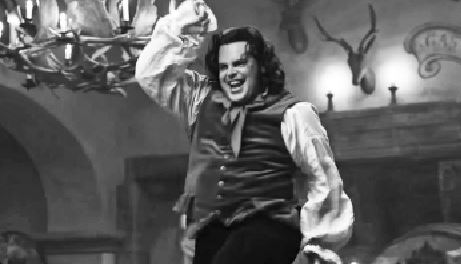‘Beauty and the Beast’ and the Diversity
Then, all the movies shared the same plot: the “perfect” girl gets saved by a strong, handsome man, they fall in love, and live happily ever after.
To viewers in the 20th century, this was exactly what they wanted. This “perfect” girl and plot all made sense. But when the 21st century rolled around, this all changed. People started to realize that this wasn’t the real world, and this has upset some viewers. So, Disney had to change its ways.
They started by taking small steps. In 1992, Aladdin was the first movie where the main character had a different ethnicity, but the condescending plot stayed the same.
The next big leap was in “Mulan,” where the plot dramatically changed. Mulan was an Asian girl who pretended to be a man so she could fight in the army. This movie showed the strength of women, but it still turned fighting for your country into a man’s job.
In 2009, Tiana became the first African-American princess in “The Princess and the Frog.” It’s about a girl pursuing her dream of opening a restaurant in New Orleans, but they stereotyped domestic tasks such as cooking as a women’s job.
In 2012, Disney began to pick up speed. They came out with “Brave,” a story about a Scottish princess who doesn’t want to be held back by the stereotypes of being a princess. She fights and saves her kingdom and ends up saving her prince. The tables have been turned!
Then “Frozen” came out in 2013, where the princess saves her sister.
Next came “Moana” where a Polynesian princess leads a demi-god on a trip across the sea. In this movie, the boy and girl are equal.
So, Disney has been breaking all of its boundaries except one: sexual orientation. Every character has been straight. There were rumors floating around that some characters were gay, such as Timon and Pumba from the “Lion King,” but these rumors were never confirmed by the producers.
Until now: the creators of the remake of “Beauty and the Beast” have announced that Josh Gad’s character, LeFou, is gay, and has feelings for his leader Gaston.
The backstory behind this controversial choice is touching. Howard Ashman, the brilliant lyricist behind many Disney films, was fighting a losing battle against AIDS as he worked on the original “Beauty and the Beast.” Ashman decided to make a couple changes of his own.
“It was his idea, not only to make it into a musical but also to make Beast one of the two central characters,” director Bill Condon explained. “Until then, it had mostly been Belle’s story that they had been telling.”
With this change of story, he had to turn the Beast into a character who could hold the spotlight. So, he turned the Beast into a metaphor of himself. “He was cursed, and this curse had brought sorrow on all those people who loved him, and maybe there was a chance for a miracle—and a way for the curse to be lifted. It was a very concrete thing that he was doing,” Condon explained.
He wrote all these memorable lyrics as a metaphor for his battle with AIDS. Ashman died before the animated film was released, so the credits played homage to him. This year, in the live-action version, LeFou was his gift from director Bill Condon: Disney’s first gay character.
The movie overall was very impressive. Emma Watson shined in her role as Belle: her voice was beautiful as she sang the iconic songs. The computer graphic of the Beast, Cogsworth, and Lumiere made people of all ages slip into the story about the enchanted castle. LeFou, flirtatious at times while wearing a pink silk bowtie, never told Gaston how he felt about him, but the viewers were able to see his affection towards Gaston through his song “Gaston.”
So, was there a big fuss over a little glimpse of a homosexual character? Did Disney twist the story for publicity or was this actually an homage to original gay songwriter for “Beauty and the Beast”? Disney will never answer these questions, so it’s up to the viewers to come to their own conclusion.



